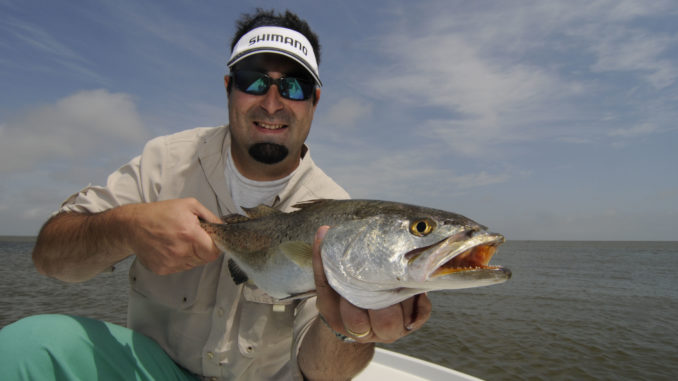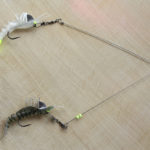
Multi-lure rigs have their place for inshore uses
Offshore anglers have used teaser rigs for decades, showing fish like dolphin and billfish multiple lures swimming together. Usually, the most-enticing lure is the only one with a hook, and the lures are arranged in a way to make that the most-likely lure to draw a strike.
Striper fishermen have used their own version of such rigs on freshwater impoundments, and more recently, largemouth bass anglers have experienced success with Alabama rigs. The smaller, castable versions of these “umbrella rigs” are made up of long wires featuring snap swivels to which spinnerbaits, swimbaits or other lures snapped are attached. It has taken a while, but inshore anglers are finally catching on to this trend.
Capt. Amy Little of Fine Lines Charters in Charleston uses a couple of versions of multi-hook rigs, including the Yumbrella Jr. Baitfish Rig and the Vudu V-Rig. She has caught speckled trout, redfish and flounder on these rigs. While both feature multiple-lure options, they are very different. The Yumbrella features five wires with snap swivels and a weighted eye to which the angler ties his running line. It aids with casting and helps the lure sink relatively quickly. The V-Rig has two wires with snap swivels, and the eye connecting to the angler’s line is not weighted.
While the Yumbrella can have as many as five lures connected, it can also have one lure connected to the center wire, with four spinning blades connected to the other swivels. The V-Rig needs two similar sized lures connected to keep it balanced. Little said both are effective, and having both rigs keeps her options open for any fishing situation or conditions.
“For flounder, I use the Vudu V-Rig more often. Both lures swim or crawl side by side along the bottom, and I usually use a weighted Vudu Shrimp on each swivel,” said Little (843-345-1310). “I will usually use two different-colored shrimp to see if the flounder are hitting one color more than the other. When that’s the case, I will switch both lures to that color until the fish quit biting it.”
Little also catches her share of redfish and speckled trout on the V-Rig.
“I mainly stick with Vudu Shrimp for redfish and specks too,” she said, “ but I fish them a little bit faster than when targeting flounder — not much faster, though. I’ll also fish the V-Rig under a popping cork when fishing around oyster rakes. It helps keep the hooks out of the oysters and works well for trout and redfish.” Little said she pops the rig fairly often when using artificial lures.
The Yumbrella rig, she said, is especially effective when the bite is really slow. She opts for a bladed lure here, but usually only puts the lure on the center wire and plain blades on the other four arms.
“It’s a lot heavier if you load five full lures, and it will wear an angler out casting and retrieving it that way,” she said. “All those blades spinning together makes the rig look like a school of baitfish swimming by, and this will often draw what I think are instinct bites from fish that may not even be actively feeding. One lure might not draw their interest, but they seem to react without thinking when they think a small school of baitfish is swimming by.”
Saltwater spinnerbaits like Strike King’s Redfish Magic are other good lures to add to both rigs. Because of the added weight and resistance, anglers should upgrade their line. It’s not unheard of for freshwater bass fishermen to use up to 75-pound braid with these rigs, and inshore anglers should do the same. The chance of more than one redfish, trout or a combination taking a bite at one of these rigs at the same time adds to the importance of anglers beefing up their fishing line.
While many inshore anglers prefer using medium-action or even medium-light rods, when using these multi-lure rigs, they should move up to at least medium-heavy rods — and heavy rods if throwing the Yumbrella with five full lures attached.
Next time you’re having a hard time getting the fish to bite inshore, and you’ve thrown every lure at your disposal, try doubling up on lures or casting a small artificial school of baitfish with one of these rigs.






Be the first to comment